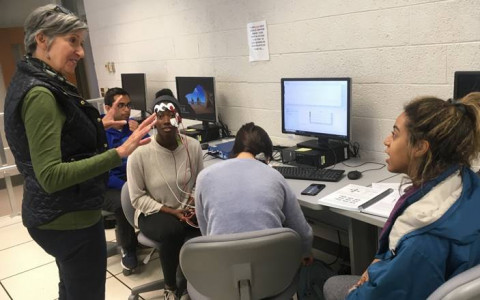Psychology majors have the chance to put their academic learning into practice in the Lab in Physiological Psychology. Meeting in the Psychology Department’s Computer Lab on the second floor of Williams Hall, the lab class teaches students a range of techniques including electrocardiography (ECG or EKG), electromyography (EMG), electroencephalography (EEG), electrodermal activity (EDA), electrooculography (EOG), respiration and reaction time. In the final lab, students practice influencing their own physiological readings using biofeedback techniques.
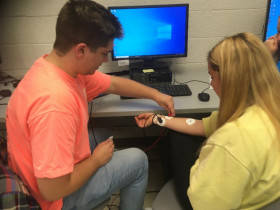
This curriculum contrasts with the official course description, which suggests that the students will be learning about surgical techniques with animals. “No animals are harmed, or even handled in the making of this lab!” quips Brittany Nackley, a 3rd year PhD student in Biological Psychology who teaches the class. Nackley is currently working to have the course description updated to reflect the course’s actual content.
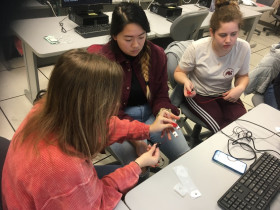
The class teaches non-invasive techniques using humans. Students use each other as the subjects for the labs, most of which involve attaching adhesive electrodes to various parts of the body. For example, the EOG lab requires 6 electrodes to be attached to the face. The electrodes “listen” for electrical signals coming from the body and translate them to a digital signal that is graphed by the lab software. By the end of the course, students are well-versed in reading these electrical signals, being able to differentiate an ECG signal from that of an EEG, EDA, EOG, EMG or respiration
.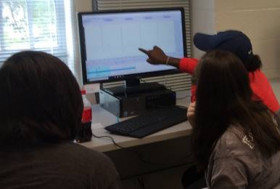
The class is composed of juniors and seniors, who often find this curriculum helpful in refining their skills for their next pursuits after graduation. “I’m planning to go into medical school,” says Jordan Oliver, a senior who is double majoring in psychology and biology. “Knowing how to read an ECG helps me get a head start on what will come next,” he explained.
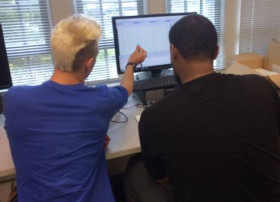
Although the lab is paired with the accompanying lecture class, Physiological Psychology, the two classes have only about 5% overlap in content, Nackley estimates. Based on student evaluations, the most commonly-cited benefit of the class is its hands-on approach, followed closely by the group-based format. Students divide into four groups of 2 to 5 students each. “I love seeing how the students gel with their group over the semester, and seeing their confidence develop with the techniques,” observes Nackley. The hands-on opportunities seem to draw plenty of students to the lab each semester: “we’re constantly bumping up against the maximum capacity of the lab,” she explains.

Until recently, the course’s popularity came at a price: “We didn’t have enough equipment for all the groups to run all the labs,” says Nackley. “Thanks to a recent purchase by our department chair, Dr. Foti, we now have all the equipment we need!” Offering one academic credit, the course brings students together for one lab a week that lasts nearly two hours. Two sections of the class are offered each semester, allowing up to 40 students from the lecture class to be concurrently enrolled in the lab.
“I try to emphasize to my students that their reward for this one credit is something resume-worthy that’s different from the usual academic course listings,” says Nackley, “all those E-G’s can make a difference in certain grad schools or academic labs that students might be pursuing after they graduate.”
In the meantime, the students are busy hosting the lab’s Physiology Fair, a class assignment that allows them to demonstrate their skills to psychology faculty, graduate students, and fellow psychology majors. The latest section enjoyed a visit from Dr. Foti herself, sharing their facility with the techniques and the new equipment.
